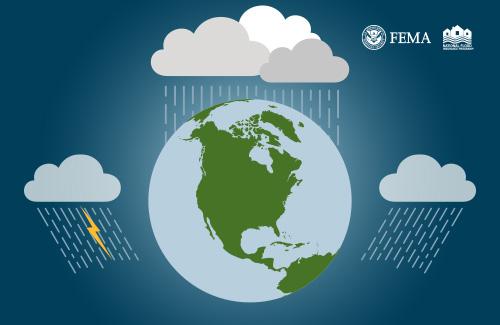Flood maps are not permanent; they can be revised to reflect changing flood risks. Between a map change and moving into a new home, your clients might end up in a new flood zone without any clue as to what that means. When your clients start asking questions, you get to stretch your agent know-how to help.
Anywhere and everywhere rain falls, floods can follow.
Flood Zones
The highest-risk flood zones are also known as Special Flood Hazard Areas (SFHA). They are areas having special flood, mudflow or flood-related erosion hazards. SFHAs will be inundated by a flood event that has a 1% chance of being equaled or exceeded in any given year. A 1% annual chance flood is also referred to as the base flood or 100-year flood.
Flood zones are given alphanumeric designations, such as zone A, B or C. The areas which have the highest risk of flooding are largely zones that have the letter A or V in their name, such as zone A, zone AR/AE, zone VE or zone V30. Areas that have a moderate flood risk are labeled zone B or X (but only zone X on maps that are shaded.) Finally, areas with the least risk of flooding are areas outside the SFHA, they’re zone C or X (but only zone x on maps in areas that are not shaded).
Flood Maps
When flood maps are updated, you can play a key role in helping your clients understand their new flood risk. Depending on how their map changes, it could reflect their risk going up or down. Unfortunately, changing flood zones can be confusing for your clients–so they rely on you to explain.
If your clients are moving into a high-risk area, it becomes critical that they understand the importance of flood insurance. Flooding is one of the most common and costly natural disasters, and flood insurance can help them protect the lives they’ve built.
Under the NFIP's pricing approach, FEMA addresses flood risk variables such as the frequency of flooding, the various different kinds of floods, as well as distance to a water source and building characteristics (such as foundation type, basement type, elevation and more). So, while flood map data is necessary and essential for communities, they are longer the most significant factor in rating premiums.
To learn more about flood maps, flood zones, and helping your client navigate their flood insurance journey, visit: https://www.agents.floodsmart.gov

